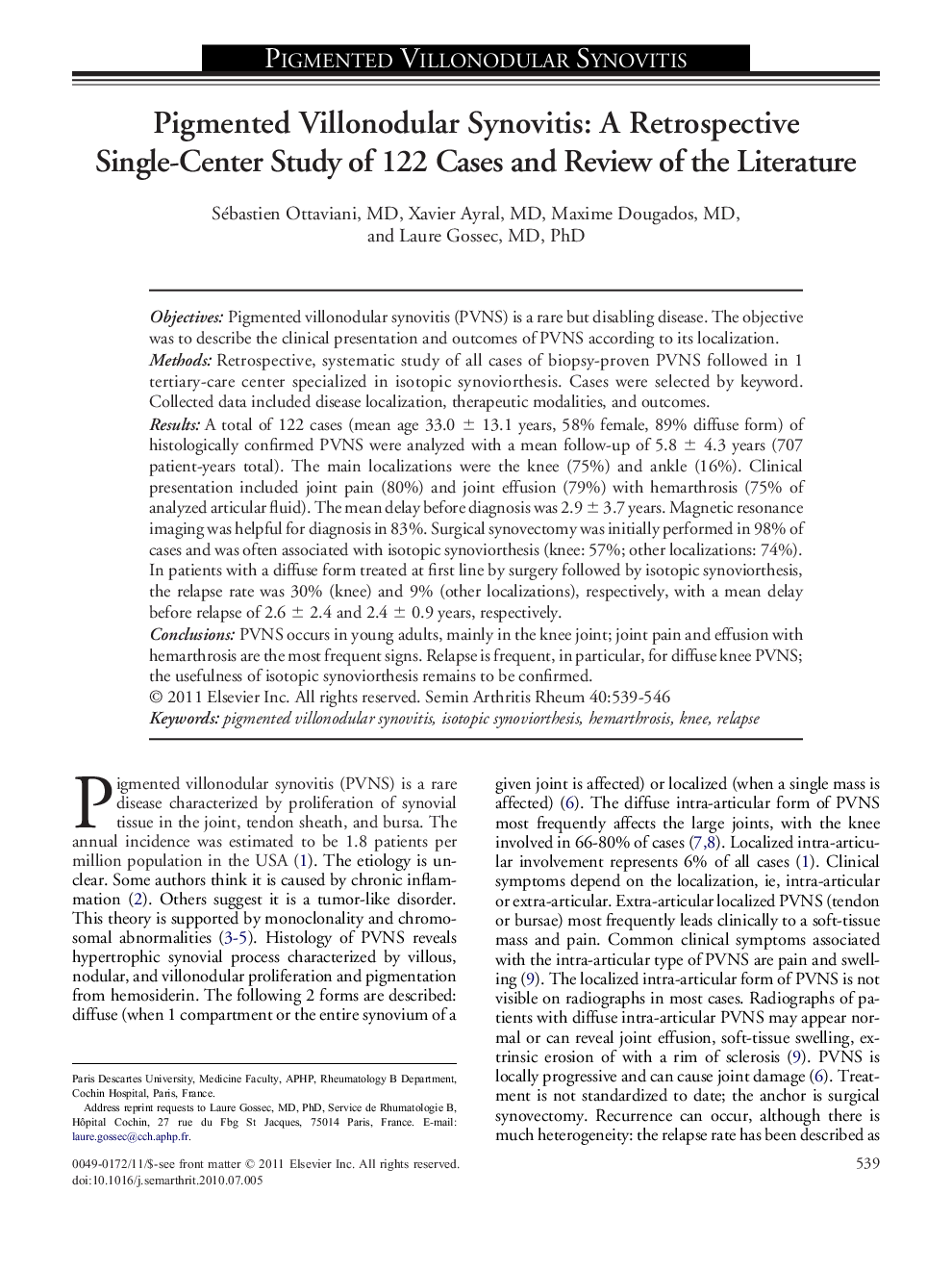| Article ID | Journal | Published Year | Pages | File Type |
|---|---|---|---|---|
| 2771560 | Seminars in Arthritis and Rheumatism | 2011 | 8 Pages |
ObjectivesPigmented villonodular synovitis (PVNS) is a rare but disabling disease. The objective was to describe the clinical presentation and outcomes of PVNS according to its localization.MethodsRetrospective, systematic study of all cases of biopsy-proven PVNS followed in 1 tertiary-care center specialized in isotopic synoviorthesis. Cases were selected by keyword. Collected data included disease localization, therapeutic modalities, and outcomes.ResultsA total of 122 cases (mean age 33.0 ± 13.1 years, 58% female, 89% diffuse form) of histologically confirmed PVNS were analyzed with a mean follow-up of 5.8 ± 4.3 years (707 patient-years total). The main localizations were the knee (75%) and ankle (16%). Clinical presentation included joint pain (80%) and joint effusion (79%) with hemarthrosis (75% of analyzed articular fluid). The mean delay before diagnosis was 2.9 ± 3.7 years. Magnetic resonance imaging was helpful for diagnosis in 83%. Surgical synovectomy was initially performed in 98% of cases and was often associated with isotopic synoviorthesis (knee: 57%; other localizations: 74%). In patients with a diffuse form treated at first line by surgery followed by isotopic synoviorthesis, the relapse rate was 30% (knee) and 9% (other localizations), respectively, with a mean delay before relapse of 2.6 ± 2.4 and 2.4 ± 0.9 years, respectively.ConclusionsPVNS occurs in young adults, mainly in the knee joint; joint pain and effusion with hemarthrosis are the most frequent signs. Relapse is frequent, in particular, for diffuse knee PVNS; the usefulness of isotopic synoviorthesis remains to be confirmed.
